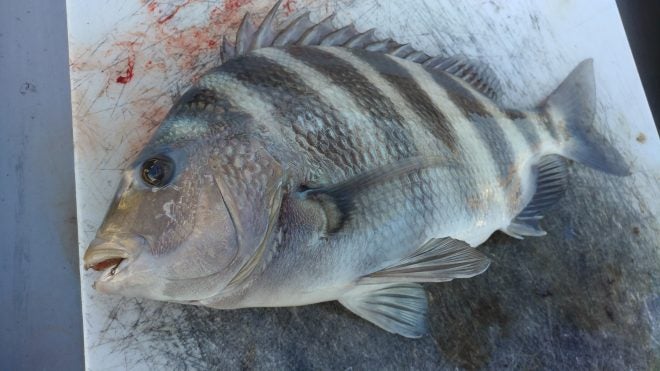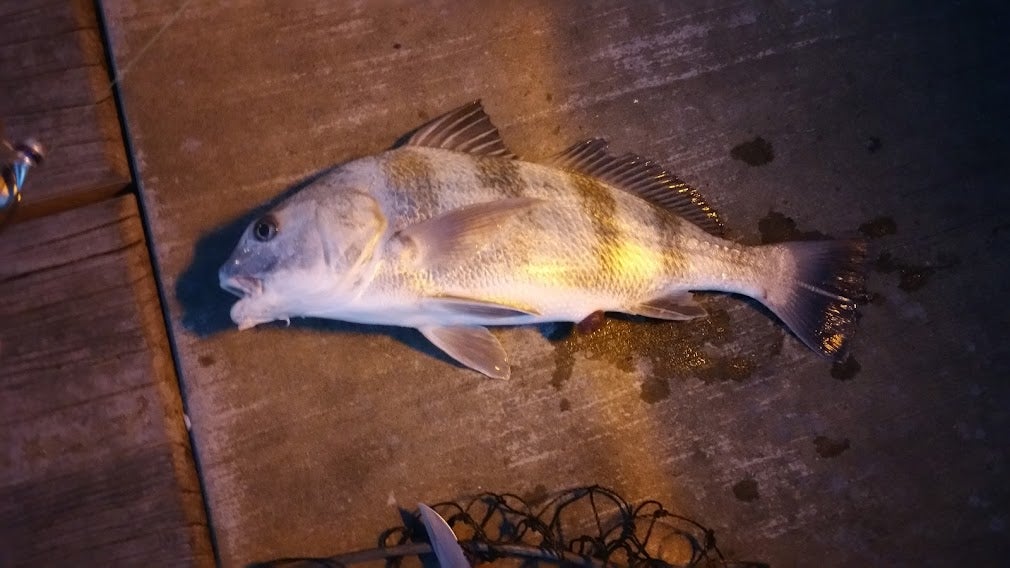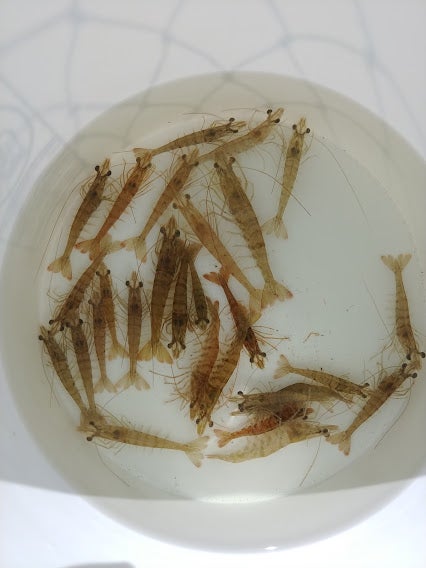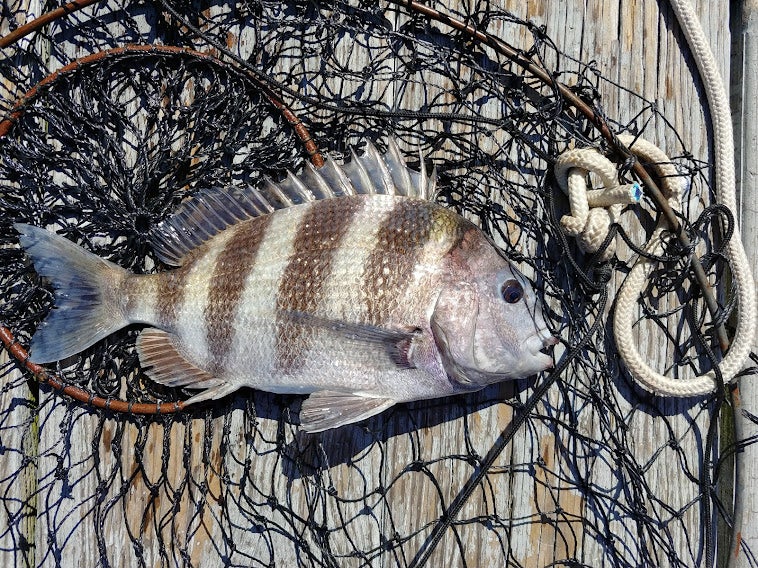Emerald Coast Pier Fishing Guide – Sheepshead (aka Convict Fish)
Eugene L. 04.11.22

Sheepshead, Sheepies, or Convict Fish are one of the most fickle species on the pier. They are known for how difficult it is to coax a bite out of. Even when you do get a bite from them, often you come back with a partially chewed bait. Sheepshead are very stocky and broad fish with vertical black and white barring on their sides. Their dorsal and anal fins both have very strong and sharp spines with their most distinguishing feature being their teeth. Sheepshead have very prominent incisors that almost look human. Behind those teeth, they have molars and rounded grinders. These fish eat mainly mollusks and crustaceans, but will eat small fish and graze on algae on occasion. You will see them grazing on the pilings, eating the barnacles, and oysters that encrust the concrete legs. They can reach about 36″ long and 20 lb, but more commonly are much smaller at a couple of pounds. Care must be taken to not confuse them with either young Black Drum or Spadefish. Both have similar black bars, but they don’t have the incisors like sheepshead.

Tackle – Sheepshead
For sheepshead, a heavier inshore rod is recommended. Something that can be used to wrestle the fish away from the pilings, but you don’t want a broomstick of a rod either because of light bites and taps of sheepshead. For the reel – because you’re not casting, but dropping your rig straight down – you do not need a lot of line capacity, but you do want a reel that is capable of at least 10 lb of drag. You want to have around 20 lb braid for your mainline; braid has no stretch so it will help transfer the sensation of the bites. I recommend fluorocarbon leader material for sheepshead, they have good eyesight and will often just examine a bait for a good minute before biting. I usually use 20 lb test fluorocarbon, but have gone all the way down to 12lb test when the fish have been very finicky.
The terminal tackle for targeting sheepshead should have a small J-hook either in a Carolina rig or put some split shot on your leader about 16″ up from the hook. For the Carolina Rig, you want to have about 16″ of leader. Too long of a leader makes it difficult to detect bites.
Bait – Sheephead
Live bait is king for sheepshead, 99% of the time they will not look at dead shrimp. So, you need one of the following baits: live shrimp, live fiddler crabs, live sandfleas, ghost shrimp, and/or oysters. You can buy live shrimp and fiddlers at most tackle shops in the panhandle, but call ahead and make sure they have them in stock. Sandfleas can be caught in the surf with a sandflea rake. Ghost shrimp and sandfleas are sold blanched and frozen at tackle shops as well, but live works better for both. Oysters can be bought at fish markets in the shell, but take some work to open and rig on a hook. They will last one bite before falling off so they take a good amount of effort to rig, but you can also smash up their shells and drop them onto the pilling as a sort of chum which can bring fish to the piling as well though.

Technique – Sheephead
For sheepshead, the key thing is live bait or as close to live bait as possible. I have heard of sheepshead hitting jigs or spoons on very rare occasions, but personally haven’t seen it happen on the pier. For the most part, you will be fishing a Carolina Rig with live bait straight up and down. Sheepshead feed off the pilings of the pier, if you watch the water you can see them go sideways as they peck at the growth. They are either eating the barnacles, oysters, or crustaceans that live in the growth. So, the plan is to gently present your bait in front of one of these actively feeding fish.
You want to be right on top of the piling you see the sheepshead on and slowly lower your bait in front of them. Keep your index finger on the line and wait to feel for a tap. It can be very light sometimes because they don’t inhale what they eat, but more graze on the bait. They can peck a shrimp off your hook without you even noticing sometimes. Once you feel a good bite, set the hook hard. They have very tough mouths with all those teeth so you need some power behind the hookset.
Once you hook up on a sheepshead you have to fight it away from the pilings and try to get it to the surface. Don’t try to reel the fish up the pier, you will probably lose it on the way up. You need to have a pier net to scoop up the fish and then bring it up onto the deck.

Table Fare – Sheepshead
Sheepshead are excellent table fare, very white flesh that cooks up very flaky. Their diet of mainly crustaceans and mollusks leads to them having very clean meat. The only issue is they are a bit tough to clean. They have large tough scales, a big ribcage, and their fin spines are very sharp. So, a lot of care must be taken when you’re cleaning them, but once you finish cleaning them the fillets are well worth the work involved.